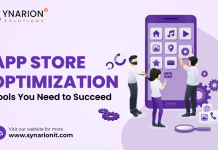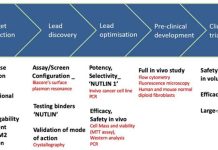1. Introduction to Tableu Developer
In the era of big data, the ability to transform raw information into meaningful insights is a game-changer for businesses. Our Tableau developer has been instrumental in harnessing the potential of data visualization to drive growth and innovation.
One Technology Services is ecstatic to present our Tableau Developer, who is an experienced and committed professional who is enthusiastic about leveraging the power of data visualization and analytics to support informed decision-making and successful business outcomes.
2. The Power of Data Visualization
Data visualization is the process of representing data in graphical or visual formats, making it easier to understand and analyze complex datasets. It transcends traditional spreadsheets and static reports, offering dynamic and interactive visuals that can uncover hidden patterns and trends.
3. The Role of a Tableau Developer
A Tableau developer is a specialist in using Tableau, a powerful data visualization tool. They play a crucial role in translating data into visually appealing and informative charts, graphs, and dashboards.
4. Becoming a Tableau Expert
Our Tableau developer embarked on a journey to master this tool. They underwent rigorous training, obtained certifications, and continuously updated their skills to stay at the forefront of Tableau’s capabilities.
5. Enhancing Data Accessibility
One of the key achievements of our Tableau developer was making data accessible to all employees. They built user-friendly interfaces that allowed even non-technical staff to explore data effortlessly.
6. Creating Interactive Dashboards
Interactive dashboards became a hallmark of our data visualization approach. Users could now interact with data, drill down into details, and gain deeper insights with just a few clicks.
7. Streamlining Data Sources
Our developer streamlined data sources, ensuring that data was clean, accurate, and up-to-date. This eliminated the risk of making decisions based on outdated or erroneous information.
8. Real-Time Data Updates
Incorporating real-time data updates was a game-changer. Decision-makers could access the most current information, enabling quicker and more accurate responses to changing circumstances.
9. Customizing Visualizations
Tableau’s flexibility allowed our developer to create custom visualizations tailored to specific business needs. This customization made data more relevant and understandable.
10. Data Storytelling
Data alone can be overwhelming. Our developer mastered the art of data storytelling, presenting insights in a compelling narrative that resonated with stakeholders.
11. Cross-Functional Collaboration
Our Tableau developer fostered collaboration between departments. They encouraged data sharing and cross-functional discussions, leading to innovative solutions.
12. Impact on Decision-Making
The impact of improved data visualization was evident in decision-making. Leaders had the confidence to make data-driven choices, leading to increased efficiency and profitability.
13. Measuring Success
Quantifying the success of our Tableau developer’s efforts was crucial. Metrics such as increased data usage, faster decision-making, and improved ROI demonstrated their contribution.
14. Challenges and Solutions
Our developer faced challenges along the way, but their problem-solving skills and commitment to excellence helped overcome obstacles.
15. Conclusion
In conclusion, our Tableau developer’s transformation of data visualization has been nothing short of remarkable. Their expertise has empowered our organization to harness the full potential of data, drive innovation, and make informed decisions with confidence.
FAQs
- What is Tableau, and why is it important in data visualization? Tableau is a data visualization tool that helps transform complex data into understandable visuals, making it vital for data-driven decision-making.
- How did the Tableau developer enhance data accessibility? By creating user-friendly interfaces and interactive dashboards, data became more accessible to non-technical staff.
- What is data storytelling, and why is it important? Data storytelling is the art of presenting data in a compelling narrative, making it easier for stakeholders to understand and relate to the insights.
- How did cross-functional collaboration benefit the organization? Collaboration between departments fostered innovative solutions and improved overall efficiency.























